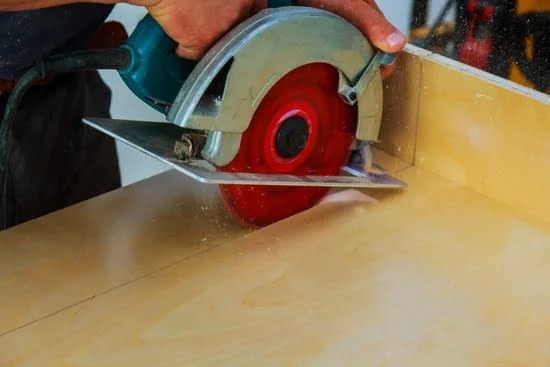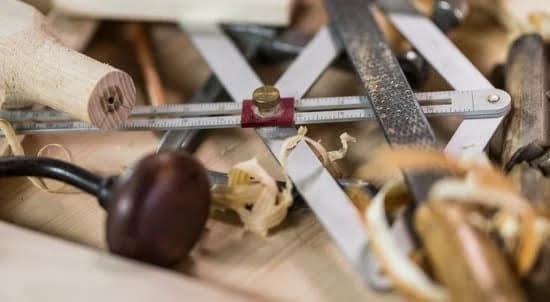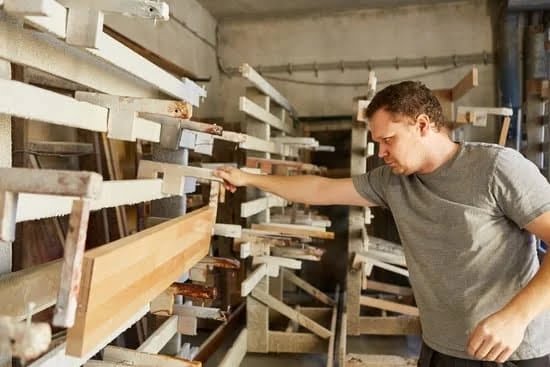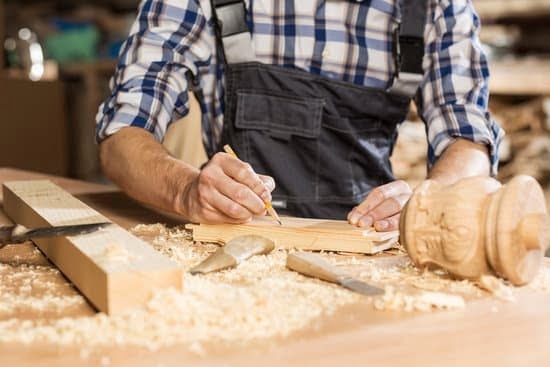Woodworking is a timeless craft that allows individuals to create beautiful and functional pieces from wood. Whether you are a beginner or an experienced woodworker, having the right power tools can significantly enhance your woodworking projects. In this article, we will explore the essential power tools for woodworking, their functions, and their relevance in the craft.
Power tools have revolutionized woodworking, making tasks quicker, more precise, and more efficient. These tools are designed to handle various woodworking tasks with ease, enabling woodworkers to achieve professional-quality results. From cutting and shaping to drilling and sanding, power tools offer a wide range of functionalities that traditional hand tools cannot match.
Having the right power tools is crucial for anyone interested in pursuing woodworking as a hobby or profession. Whether you are just starting your journey or already have experience in woodworking, understanding which power tools are essential can help you make informed purchasing decisions. In the next sections of this article, we will delve into the must-have power tools for beginners as well as advanced options specifically catered to professional woodworkers.
By equipping yourself with the right power tools for woodworking, you not only gain access to increased efficiency but also open up a world of possibilities in terms of what you can create. From simple projects like building shelves or picture frames to more intricate endeavors such as crafting intricate furniture pieces or carving sculptures, having the appropriate power tools can truly unlock your potential as a woodworker.
So let’s get started and explore the world of power tools for woodworking.
Essential Power Tools for Woodworking Beginners
Woodworking is a rewarding and creative hobby that allows individuals to craft beautiful and functional pieces from wood. For beginners in woodworking, having the right power tools can make all the difference in their projects. In this section, we will discuss the essential power tools that every woodworking beginner should have in their toolbox.
- Circular Saw: A circular saw is one of the most versatile and fundamental power tools in woodworking. It is used for making straight cuts on various wood materials. Whether it’s cutting plywood, boards, or dimensional lumber, a circular saw is a must-have tool for any woodworking beginner. When purchasing a circular saw, look for one with adjustable depth settings and a sturdy base plate.
- Power Drill: A power drill is another essential tool that every woodworking beginner should have. It allows you to drill holes and drive screws into wood effortlessly. Look for a corded or cordless drill with variable speed settings and a keyless chuck for quick bit changes. Investing in a set of high-quality drill bits will also be advantageous for various woodworking tasks.
- Random Orbital Sander: Achieving smooth and polished surfaces is an important aspect of woodworking, and a random orbital sander can help you achieve just that. This handheld power tool uses sandpaper disks to remove imperfections and smoothen rough edges on wood surfaces. Consider purchasing a random orbital sander with variable speed control to adjust sanding intensity based on the project requirements.
| Power Tool | Description |
|---|---|
| Circular Saw | A versatile tool used for making straight cuts on various wood materials. |
| Power Drill | Enables drilling holes and driving screws into wood effortlessly. |
| Random Orbital Sander | Used for achieving smooth and polished surfaces on wood by removing imperfections and rough edges. |
For woodworking beginners on a budget, there are several budget-friendly options available for these power tools. Many reputable brands offer entry-level models that provide good performance at a more affordable price point. Additionally, consider purchasing used power tools from reliable sources or local woodworking communities to save even more money.
Having these essential power tools in your woodworking arsenal will set you on the right path towards creating impressive projects with precision and efficiency. As you gain experience and tackle more advanced projects, you can expand your collection of power tools to explore new techniques and take your woodworking skills to the next level.
Advanced Power Tools for Professional Woodworkers
When it comes to woodworking, professional woodworkers often require power tools that offer enhanced precision, efficiency, and versatility. These advanced power tools can make a significant difference in the quality and speed of their work. Here are some of the essential advanced power tools that every professional woodworker should consider adding to their arsenal:
- Bandsaw: A bandsaw is a versatile cutting tool that allows woodworkers to tackle intricate cuts on various materials with ease. It is ideal for resawing lumber, cutting curves, creating joinery, and more. Look for a bandsaw with a sturdy frame, powerful motor, and adjustable speed settings.
- Router: A router is an indispensable tool for professionals due to its ability to shape edges, make decorative cuts, create dadoes and rabbets, and produce precise joinery. Look for a router with variable speed control, good dust collection capabilities, and comfortable handles for extended use.
- Planer: A planer is used to smooth and flatten rough lumber or reduce its thickness uniformly. It is an essential tool for professional woodworkers who frequently work with rough stock or need precise dimensions for their projects. Look for a planer with a wide cutting capacity, solid construction, and easy-to-use depth adjustment mechanisms.
In addition to these advanced power tools, there are several others worth considering based on specific applications and preferences:
- Miter Saw: Ideal for making accurate crosscuts and miter angles quickly.
- Jigsaw: Excellent for making intricate cuts in both straight lines and curves.
- Dovetail Jig: Perfect for creating strong dovetail joints effortlessly.
It is highly recommended to invest in reliable brands and models when purchasing advanced power tools. Some renowned brands known for their quality and performance include DeWalt, Bosch, Makita, and JET
By equipping themselves with these advanced power tools, professional woodworkers can elevate the precision, efficiency, and overall quality of their work, helping them take their craftsmanship to new heights. However, it’s important to remember that proper safety precautions should always be followed when operating these powerful tools.
Power Tools for Specific Woodworking Projects
Woodworking encompasses a wide range of projects, from furniture making to cabinetry and carving. Each project type requires its own set of skills and tools, and using specialized power tools can greatly enhance the efficiency and precision of your work. In this section, we will explore some power tools that are tailored to specific woodworking projects and discuss their advantages.
Furniture Making
When it comes to furniture making, there are several power tools that can make the process much easier. One essential tool is a table saw, which allows you to make precise cuts in various materials. Another useful power tool for furniture making is a router, which can help you create decorative edges and joinery. Additionally, a thickness planer is crucial for obtaining smooth and even surfaces on your wood pieces.
Cabinetry
Cabinetry requires attention to detail and accuracy, which is where specialized power tools can truly shine. A cabinet table saw with a sliding table attachment is indispensable for cutting large panels accurately. A pocket hole jig is another valuable tool for cabinetry, as it enables quick and strong joinery without the need for complex techniques. Lastly, a trim router or a dovetail jig can assist in creating precise joints for cabinet doors and drawers.
Carving
For those interested in intricate carving work, there are power tools designed specifically for this purpose. One such tool is a rotary tool or a Dremel, which offers versatility with its various attachments and can be used for shaping wood or adding fine details. A reciprocating carver or an oscillating spindle sander are ideal options for removing excess material quickly while maintaining control over the depth and shape of the carving.
Using specialized power tools not only streamlines the woodworking process but also allows you to achieve professional-level results more efficiently. These examples serve as starting points but keep in mind that there are many other power tools available for specific woodworking projects. It’s important to research and choose the tools that best suit your project requirements, skill level, and budget.
Remember to always prioritize safety by following proper usage instructions and wearing protective gear. With the right power tools, you can take your woodworking skills to new heights and create stunning pieces of craftsmanship.
Safety Considerations and Protective Gear
Woodworking can be a highly rewarding hobby or profession, but it is important to prioritize safety when using power tools. The use of proper protective gear and adherence to safety measures can prevent accidents and injuries. This section will emphasize the importance of safety considerations in woodworking and provide tips on how to handle power tools responsibly.
One of the most crucial aspects of safety in woodworking is wearing appropriate protective gear. When operating power tools, it is recommended to wear safety glasses or goggles to protect the eyes from debris and flying wood particles. Additionally, ear protection such as earmuffs or earplugs should be used to prevent hearing damage caused by loud machinery.
Another essential safety measure is setting up a safe workspace. It is vital to have a well-ventilated area with adequate lighting where the woodworking projects can be carried out. This helps minimize accidents caused by poor visibility. It is also important to keep the workspace organized and free of clutter, ensuring that there are no tripping hazards.
In addition to wearing protective gear and maintaining a safe workspace, responsible handling of power tools is crucial for safety. Woodworkers should ensure that they are familiar with the specific operation instructions for each tool they use. Following the manufacturer’s guidelines for proper usage can help prevent accidents and maintain optimal functionality of the tools.
By following these safety considerations and utilizing the necessary protective gear during woodworking activities, individuals can greatly reduce the risk of accidents or injuries. Prioritizing safety not only ensures personal well-being but also contributes to an overall enjoyable woodworking experience.
| Protective Gear | Description |
|---|---|
| Safety Glasses/Goggles | Protects eyes from debris and flying wood particles |
| Ear Protection (Earmuffs/Earplugs) | Prevents hearing damage caused by loud machinery |
| Dust Mask/Respirator | Filters out airborne dust particles and protects against respiratory issues |
| Gloves | Provides hand protection from sharp edges, splinters, and rotating blades |
| Apron/Overalls | Protects clothing from wood chips, spills, and other potential hazards |
| Hearing Protectors (Earmuffs/Earplugs) | Muffles loud noises to prevent hearing loss or damage |
Power Tool Maintenance and Care
Power tools are a significant investment for any woodworker, and it is essential to care for them properly to ensure their longevity and optimal performance. Regular maintenance and care can prevent breakdowns, extend the lifespan of your tools, and reduce the risk of accidents. In this section, we will discuss the importance of power tool maintenance and provide guidance on how to take care of your tools.
- Cleaning: Regular cleaning is crucial to keep power tools in good condition. Dust and debris can accumulate on the tool’s surface, motor vents, and moving parts, which can affect performance and cause overheating. Use a dry cloth or vacuum with a brush attachment to remove dust from the tool’s exterior. For stubborn debris stuck in crevices or around the motor vents, use a soft brush or compressed air.
- Lubrication: Proper lubrication ensures smooth operation of power tools with moving parts such as drills or saws. Refer to the manufacturer’s instructions for specific lubrication points and recommended lubricants. Apply lubricant sparingly to avoid excessive build-up or damage to internal components.
- Calibration: Power tools like table saws or miter saws may require periodic calibration to maintain accuracy. Check your tool’s user manual for instructions on how to calibrate specific adjustments such as blade alignment or fence positioning. Regular calibration ensures precise cuts and prevents potential safety hazards.
- Storage: When not in use, store your power tools in a clean and dry environment away from extreme temperatures and humidity. Use the original case or invest in protective cases or bags that offer cushioning and protection against dust buildup.
- Troubleshooting: Despite proper care, power tools may encounter issues over time. It is important to troubleshoot problems promptly rather than continuing to use malfunctioning equipment, potentially causing further damage or injuries.
- If you notice unusual noises, vibrations, or decreased performance from your power tool, consult the user manual or reach out to the manufacturer’s customer support for guidance.
- For minor issues like loose screws, misaligned blades, or worn-out parts, consult online resources or woodworking communities for troubleshooting tips or replacement part recommendations.
By following these maintenance practices and addressing any issues promptly, woodworkers can ensure their power tools are always in top condition. Proper care not only prolongs the lifespan of the tools but also contributes to safer and more efficient woodworking projects.
Upgrading Your Power Tools
Signs that indicate it might be time to upgrade your power tools
As a woodworker, it’s crucial to recognize the signs that indicate when it might be time to upgrade your power tools. While it can be tempting to hold onto your current tools for as long as possible, outdated or malfunctioning equipment can hinder your progress and compromise the quality of your work. Here are some signs to look out for:
- Inefficiency: If you find that your current power tools are not performing as efficiently as they used to, it may be a sign that they are reaching the end of their lifespan. Slow or inconsistent performance can not only slow down your workflow but also lead to frustration and errors in your woodworking projects.
- Lack of features: Woodworking technology is constantly evolving, and new power tools often come with advanced features and capabilities that can greatly enhance your woodworking experience. If you notice that newer models offer functions or options that would benefit your specific needs or projects, it might be worth considering an upgrade.
- Wear and tear: Over time, power tools may start showing visible signs of wear and tear. Components such as blades, bits, or belts may become worn down or damaged, compromising their performance and accuracy. Additionally, if you frequently use a particular tool and notice signs of excessive use or deterioration, it could be a sign that an upgrade is necessary.
- Safety concerns: The safety of both yourself and others in your workspace should always be a top priority when using power tools. If you notice any safety issues with your current equipment – such as loose parts, faulty electrical cords, or ineffective safety mechanisms – upgrading to newer models with improved safety features can help mitigate potential risks.
Advice on how to choose new power tools that suit your changing needs and skill level
When considering an upgrade for your power tools, there are several factors to take into account to ensure they suit your changing needs and skill level:
- Research and assess your requirements: Start by identifying the specific areas where your current tools fall short and determine what features or functions you need in new equipment. Consider the type of woodworking projects you frequently undertake, your desired level of precision, and any specific challenges you face. Conduct thorough research to find power tools that align with these requirements.
- Test before purchasing: Whenever possible, try out different power tools before making a purchase. Visit local woodworking stores or attend expos where you can handle various models to get a feel for their weight, balance, and ease of use. This hands-on experience can help you gauge if a particular tool is suitable for your needs.
- Seek recommendations: Reach out to experienced woodworkers or join online forums and communities dedicated to woodworking to gather insights and recommendations on reliable brands or models that align with your needs. Learning from someone who has firsthand experience with a certain tool can provide valuable guidance in making an informed decision.
- Consider long-term investment: While it may be tempting to go for the most affordable option available, it’s important to consider the long-term value of investing in high-quality power tools. Tools made from durable materials and backed by reputable manufacturers often offer better performance and longevity, ultimately saving you money in the long run.
- Take your skill level into account: As your woodworking skills progress, you may require more advanced power tools with additional features that cater to higher precision or complexity levels. Evaluate where you stand in terms of your skill level and choose tools that allow for growth and development as a woodworker.
By considering these factors when upgrading your power tools, you can ensure that you are making an informed decision that will benefit both the quality of your work and your overall woodworking experience.
Must-Have Power Tool Accessories for Woodworking
Woodworking power tools are an essential asset for any woodworker, but their capabilities can be further enhanced with the use of accessories. These accessories are designed to complement the power tools and offer added efficiency, precision, and safety during woodworking projects. In this section, we will explore some must-have power tool accessories that can elevate your woodworking experience.
One crucial accessory for many power tools is a dust collection system. Woodworking generates a significant amount of dust and debris which, if left unmanaged, can pose health risks and create a messy work environment. A dust collection system helps to extract these particles at the source, keeping the air clean and reducing the risk of respiratory issues.
There are various options available such as shop vacuums, dust collectors, or air filtration systems. It is important to consider the size of your workspace and the type of woodworking tasks you undertake when choosing a dust collection system.
Another useful accessory is a set of high-quality blades or bits for different power tools. Blades for circular saws or table saws should be sharp and in good condition to ensure precise cuts without tear-out or splintering. Router bits also play a significant role in creating intricate designs or profiles on wooden surfaces. Investing in carbide-tipped blades and bits can greatly improve the quality of your cuts and extend their lifespan.
Clamps are indispensable accessories that provide stability when working with power tools such as routers or jigsaws. They securely hold workpieces in place, reducing vibrations and potential accidents caused by slipping materials. It is recommended to have a variety of clamps in different sizes and types including bar clamps, quick clamps, or pipe clamps to accommodate various project requirements.
Conclusion
In conclusion, selecting the right power tools is essential for woodworkers looking to embark on a successful woodworking journey. The variety of power tools available can greatly enhance efficiency, precision, and overall productivity. For beginners, it is important to have a set of essential power tools that will provide a solid foundation for their woodworking skills.
These entry-level tools should include a circular saw, a drill driver, and an orbital sander. By investing in quality but budget-friendly options, beginners can get started on their woodworking projects with confidence.
For professional woodworkers who already possess basic woodworking skills and knowledge, advanced power tools can take their craftsmanship to the next level. These tools offer enhanced precision and efficiency for more complex projects. Some recommended power tools for professionals include a track saw, a router table, and a miter saw for accurate cuts and joinery. Reliable brands such as Bosch and DeWalt offer models known for their durability and performance.
It is also important to consider the specific types of woodworking projects one intends to pursue. Different projects require specialized power tools tailored to meet their unique demands. Whether it’s furniture making, cabinetry, or carving, using specialized power tools designed specifically for these tasks can save time and produce better results. Real-life success stories from experienced professionals in these fields serve as inspiration for aspiring woodworkers.
Safety should always be paramount when working with power tools. Protective gear such as safety goggles, ear protection, and dust masks should be worn at all times to minimize accidents and ensure personal safety. Setting up a safe workspace with proper ventilation is equally important.
Additionally, maintaining and caring for power tools is crucial to prolonging their lifespan and ensuring reliable performance. Regular cleaning, lubrication, and calibration are necessary maintenance practices that keep the tools in optimal condition. Troubleshooting common issues can save time and money by preventing major breakdowns.
Lastly, upgrading power tools should be done when signs indicate it is necessary or when skill level advances. Choosing new tools that suit changing needs and skill level is important for continued growth and success in woodworking. Long-term investment in high-quality tools can pay off in terms of durability, performance, and overall satisfaction.
Frequently Asked Questions
What power tool is used for woodworking?
A power tool commonly used for woodworking is a table saw. The table saw is an essential tool in any woodworkers’ workshop as it provides precise and straight cuts through various types of wood. It consists of a circular blade mounted on an arbor, which protrudes through the surface of a flat table.
The woodworker feeds the wood through the blade, allowing them to cut boards, create joints, or shape pieces to the desired dimensions. The table saw’s versatility and ability to handle large projects make it an indispensable tool for woodworking.
Which brand of power tool is best for woodworking?
While there are many reputable brands in the market, it is difficult to determine a single brand that stands out as the absolute best for woodworking power tools. The top choice can often be subjective and dependent on personal preference, budget, and specific needs of the woodworker. Several well-known brands have established themselves as reliable options for quality power tools in woodworking.
Brands such as DeWalt, Bosch, Makita, Festool, and Milwaukee have consistently earned positive reviews from professionals and enthusiasts alike due to their reputation for durability, performance, and innovation in designing tools specifically catered towards woodworking applications. Ultimately, selecting the best brand depends on individual requirements and research into product reviews.
What power tools do you need to make furniture?
To make furniture successfully, several power tools are commonly used by woodworkers. These include a table saw (as mentioned earlier), a compound miter saw or sliding miter saw for accurate crosscuts and angled cuts, a jointer and planer for preparing rough lumber by flattening one face and creating parallel edges respectively, an electric drill or cordless drill-driver for boring holes or driving screws, a router for decorative edge work or joinery techniques like dovetails or dadoes, and depending on the style of furniture being made – specialized tools such as biscuit joiners or spindle sanders might also be relevant additions to one’s toolbox.
Additionally hand-held power tools including random orbital sanders, jigsaws, and circular saws can also prove beneficial in furniture making due to their portability and ability to handle various cutting, shaping, or smoothing tasks. The specific power tools required to make furniture may vary depending on the complexity of the project and personal preferences of the woodworker; however, having a combination of these essential power tools provides a solid foundation for building high-quality furniture.

Hi everyone! I’m a woodworker and blogger, and this is my woodworking blog. In my blog, I share tips and tricks for woodworkers of all skill levels, as well as project ideas that you can try yourself.





